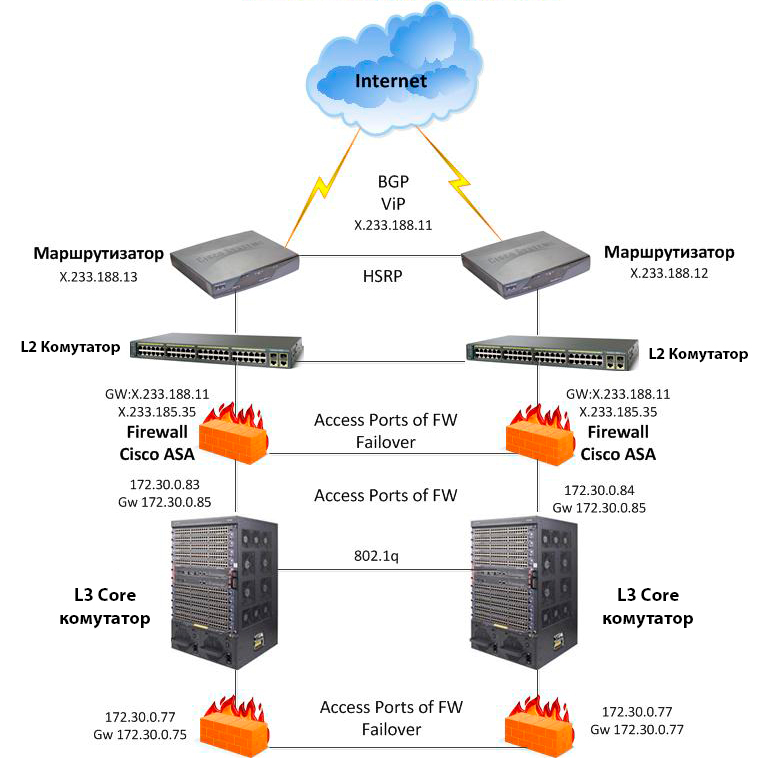HSRP (Host Standby Redundancy Protocol) – a protocol designed to provide fault tolerance of routers. This is achieved by grouping routers together and assigning them a common IP address, which will be used as the standard default gateway for computers on the network.
Setting up HSRP involves combining the corresponding interfaces of the primary and backup routers into an HSRP group that emulates a virtual router. The failure of one of the group's HSRP routers does not entail the unavailability of the gateway address required for various services.
GLBP protocol is involved in load balancing solutions. Reservation of Internet channels can be provided using IP SLA functions or BGP routing protocol.
Problems that are being solved
TechExpert company's solution to ensure fault tolerance of Cisco-based data network perimeter equipment provides the following tasks:
- Ensuring the continuity of business processes in the event of failure of the main routing node
- Load balancing between two devices
Cisco products used
- Cisco Router gray: 19XX, 29XX, 39XX
- Cisco ASA 5580-20, 5580-40, 5585-X-SSP20, 5585-X-SSP60
The benefits of the decision that the business receives
- Ensuring the continuity of business processes in the event of failure of the main routing node
- Load balancing between two devices
Scheme of the solution
Examples of implemented projects
JSC "Poltava gas and oil company"
The TechExpert company implemented a project to build a fault-tolerant perimeter of several key segments of the corporate network. The goal of the project was to build a fault-tolerant network perimeter based on Cisco equipment.

